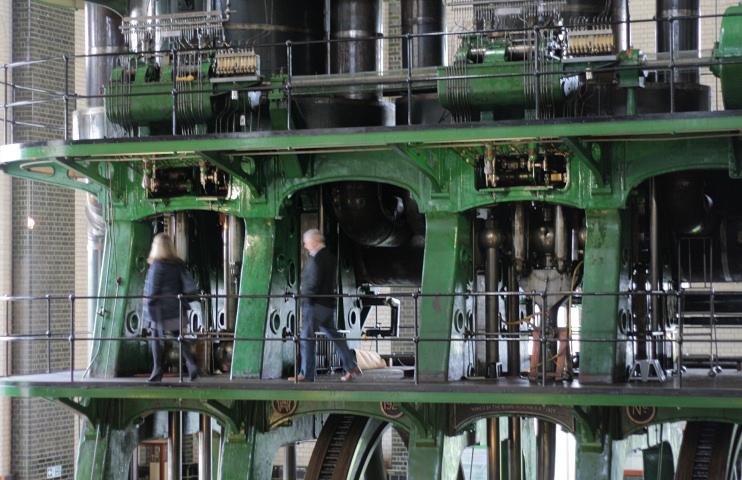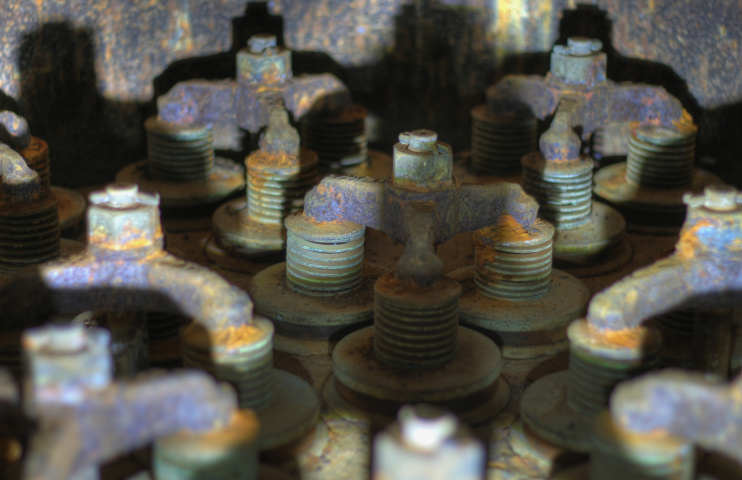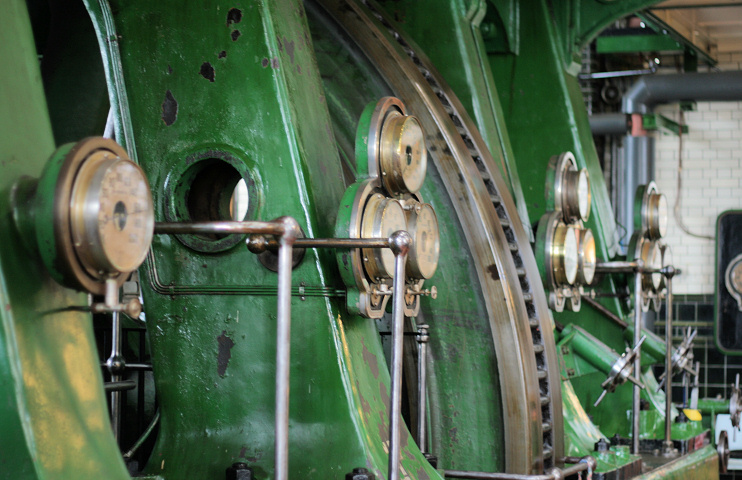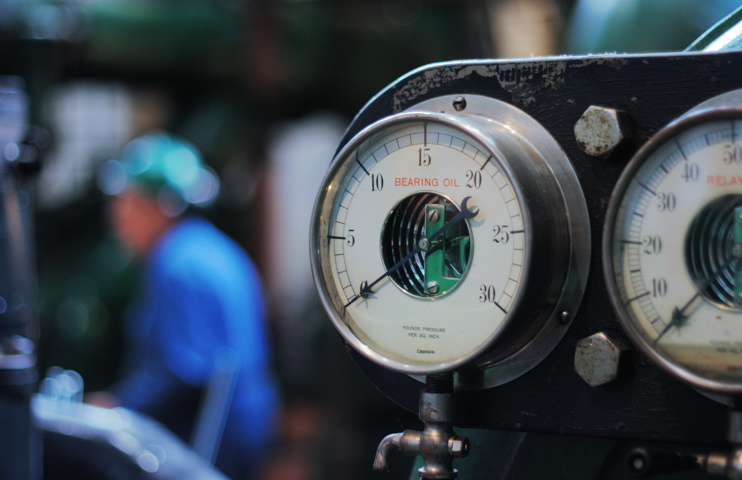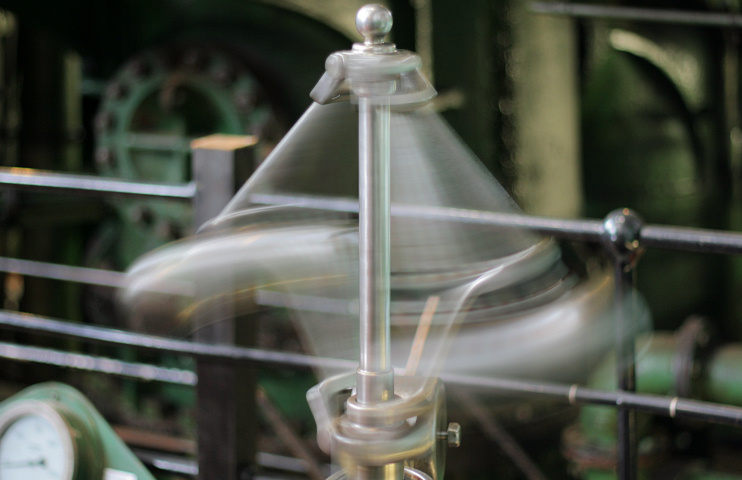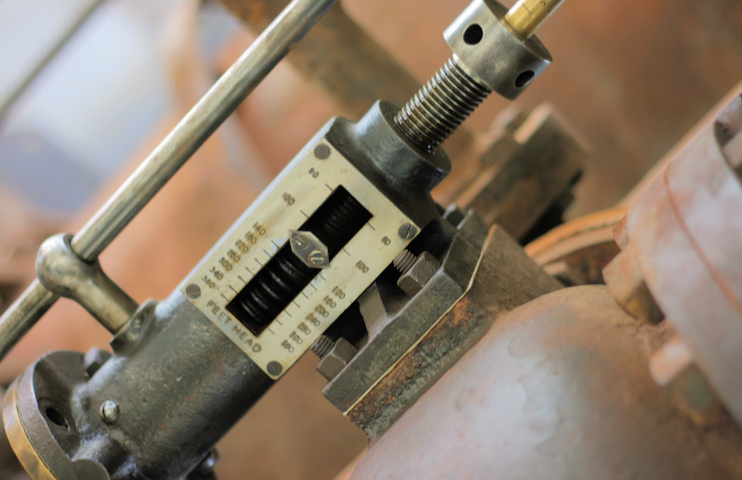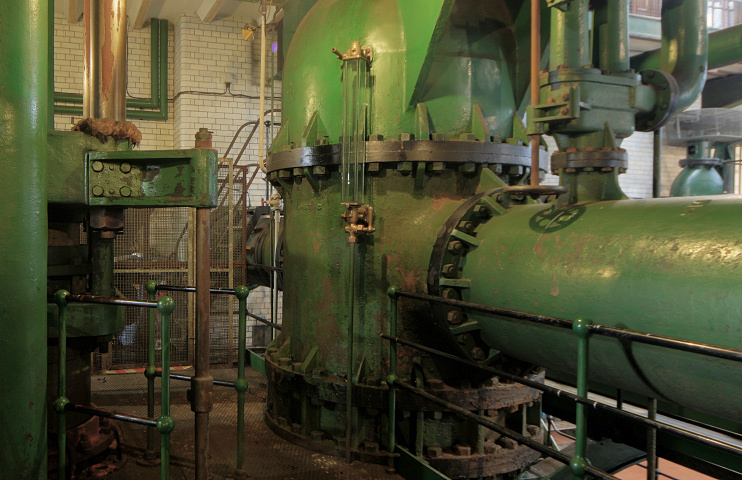Kempton Steam Museum
‘The apogee of the steam-powered pumping station’
Kempton Steam Museum, Feltham
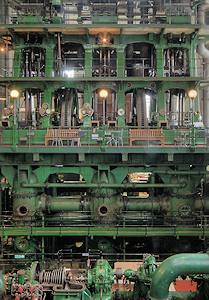
Kempton Steam Museum is located north of Kempton Park racecourse, just inside the Greater London border in the borough of Hounslow. Unlike many other steam museums, Kempton isn’t a collection of mixed-provenance engines of various ages, sizes and designs. It’s just one machine (consisting of a pair of engines), situated where it’s always been. But what a machine!
The New River Company established a waterworks at Kempton in 1897, with five triple-expansion steam engines built by the Lilleshall Company. Two of the engines lifted water from the Thames (via reservoirs and filter beds) and three pumped the water on to Finsbury and Cricklewood.
In 1903 the newly constituted Metropolitan Water Board compulsorily acquired the New River Company – and eight other private water companies. With the expansion of London’s northern suburbs after the First World War, the board decided to build a new engine house at Kempton and work was completed in 1928, when the two triple-expansion engines on show today went into service.
Built by Worthington-Simpson at Newark-on-Trent, the engines were brought down in component form by train, using the waterworks’ own railway for the last leg of the journey. The maximum payload of a railway truck meant that no single casting could weigh more than 16 tons. The engines were assembled on site using a 20-ton gantry crane that was still in active service when Hidden London visited in 2016. At 62 feet high, the Worthington-Simpson engines are the largest ever built in the UK. They ran continuously, except for periods of maintenance, with steam provided by six moving-grate boilers.
As the five Lilleshall engines were still in service the new engines were numbered 6 and 7 – and they were respectively named after Sir William Prescott, chairman of the Metropolitan Water Board from 1928 to 1940, and his wife. Engines No.6 and 7 stand opposite each other in the cavernous hall – the Lady Bessie Prescott Engine is shown in the photograph above.
The site employed 144 men and delivered 86 million gallons of water a day in 1963. Five years later the Lilleshall engines were decommissioned, their boiler house pulled down and the reservoirs abandoned. Electric pumps installed in the Lilleshall engine house now deliver 75 million gallons of water a day, operated by a site staff of just 14.
In 1980 the moving-grate boilers were scrapped and the Worthington-Simpson engine house “went cold and dead” – apparently causing most of the windows to shatter. The Kempton Great Engines Trust was formed in 1995 and the pumping station was grade II* listed. A new boiler house was built for the trust by Thames Water, allowing the Sir William Prescott Engine to be brought back into operation for demonstration purposes. His Royal Highness the Prince of Wales inaugurated the museum on 13 December 2002.
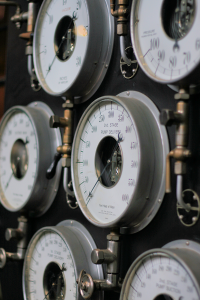
It’s a cliché to sing the praises of Victorian engineers but the size and power of this interwar achievement at Kempton is something to behold. The Victorians might have created something more ornate (they certainly did at Crossness and Abbey Mills sewage pumping stations) but even Bazalgette or Brunel might have struggled to imagine something this monumental. James Watt certainly would have.
Everything at Kempton is on a gargantuan scale. The engine house itself is the size of a cathedral. Certain components bear a resemblance to parts of a car engine or some other recognisable machine, but they’re literally a hundred times bigger. There are spanners lying around that weigh as much as a sack of potatoes.
Down in the bowels, it’s like being in the engine room of some maritime leviathan (a steam-powered supertanker, perhaps). Up at the top you might feel faint if you don’t have a good head for heights. The Kempton pumping engines were a one-off. No one tried to build a set of steam engines quite like this again.
Skilled enthusiasts have spent decades getting much of the equipment back into working order. And they keep things clean and polished where possible in an industrial setting. Much of the metalwork gleams. (But many other parts are liberally lubricated with Castrol’s finest oils and greases so don’t lean in too close if you’re wearing a white suit or dress.)
They get the steam up a few times a year. But – at least for adults with an interest in machinery – Kempton is worth a visit any day it’s open.
Kempton Steam Museum, Kempton Park Waterworks, Snakey Lane, Feltham TW13 6XH
Phone: 01932 765328
Website: Kempton Steam Museum
Opening times and prices: See the website for details, including for steaming weekends and other events.
Facilities: Limited light refreshments; books and souvenirs for sale at reception
Nearest station: Kempton Park (National Rail) then a ‘brisk’ 15 minute walk. Thanks to the Country Way viaduct interposing itself, Kempton Steam Museum is not easy to reach, even though you can see the twin chimneys from miles away. Whether you’re arriving on foot or by car, from whatever direction, Snakey Lane is the only option.
NearbyThere’s a miniature railway in a field across the way that runs on some Saturdays and most Sundays
The quotation at the top of this article is shortened from a phrase in Historic England’s grade II* list entry for Kempton Park pumping station.


